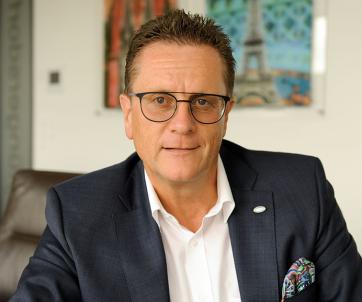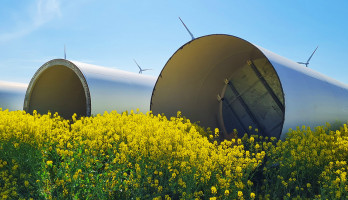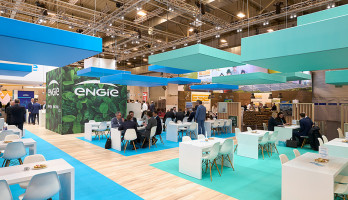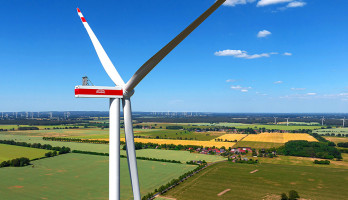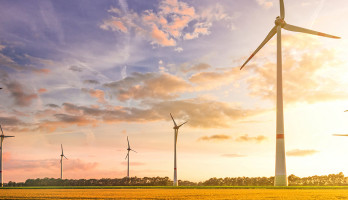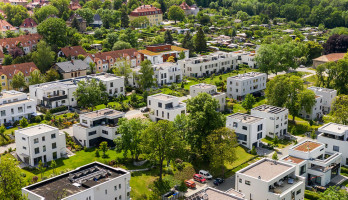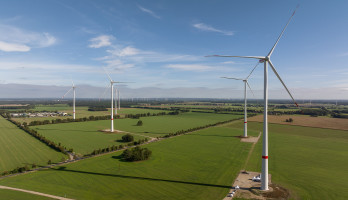
Impulse #6: Climate neutrality needs a breath of fresh air
Is the "wind of change" now blowing for renewable energies and for climate neutrality in Germany? This was my first thought when I heard a few days ago that the Federal Network Agency awarded a record number of 240 wind turbines with a total output of 1100 megawatts at the latest wind auction for the first time since 2017. It was the second of a total of three tenders for onshore wind turbines that the agency conducts annually, in each of which it awards contracts to the applicants with the lowest subsidy amount. If you now have the same hopes as I do, dear readers, I must unfortunately curb both your and my euphoria. We can certainly take this as a signal that things are finally moving forward a bit in terms of wind energy in this country. However: That is not enough. We need more, much more.
The expansion of wind energy is a task for society as a whole. That is why a master plan is needed to break down the federal climate targets to the local level.
Out of coal, into wind energy
After all, the goal cannot be overlooked: the German government's Climate Protection Act stipulates that Germany must be climate-neutral by 2045 and that greenhouse gas emissions must be reduced by at least 65 percent by 2030 compared with 1990 levels. It is also clear that all nuclear power plants are to be shut down by 2022 and that coal is to be phased out completely by 2038 at the latest. There is still consensus that renewable energies are a central pillar of the energy transition to substitute nuclear power and coal. The construction of new wind turbines remains essential; all parties agree on this. Why, then, have the developments in renewable energies and, in particular, wind energy not progressed much further in this country?
Climate protection caught between federal, state and local authorities
The answer is not really news; it is something that I and my have been encountering for a long time in discussions with politicians, project partners and customers: We operate in a climate of conflicting interests. On the one hand, there is the federal policy, which sets the climate targets and drives forward renewable energies. And on the other side are the states, cities and municipalities, which have to provide the corresponding locations for photovoltaic and wind power plants. And this is where a huge gap opens up: There is a lack of a clear concept that defines the way in which the federal climate targets are to be achieved by the states and by local authorities and municipalities. In other words: Politicians must break down climate targets to the local level. In my view, what is needed is a master plan for each municipality that sets out specific instructions for action – while remaining realistic so that individual municipalities are not overburdened. This is the breath of fresh air we need - and urgently.
"Wind of Change" for climate protection
The fact is that if the rate of expansion in the wind onshore sector continues to develop as it has in the past three years, it is simply impossible for Germany to achieve the 65 percent climate target by 2030. We need wind power to mitigate climate change. Rural areas are especially called upon in this regard, as the required land is not effectively available in cities. Of course, I can understand that many people do not find wind turbines aesthetically pleasing and are concerned about possible noise pollution, among other things. But there is so much more at stake: nuclear power and coal phase-out have been decided, natural gas is under discussion, climate neutrality must be the central goal. This is a task for society as a whole, to which everyone must make a contribution. This is a question of solidarity, in which, in my opinion, both the planners and operators of the plants and the local residents have a duty. Because one thing is certain: only together can we fight global warming and shape our green future. And incentives continue to be created: for example, communities whose area is within a 2.5-kilometer radius of a wind turbine receive a financial share in the wind farm and can receive monetary compensation of 0.2 cents/kilowatt hour from the turbines in accordance with the EEG.
Implementing the energy transition with ENGIE
ENGIE Deutschland is committed to helping your company as a partner – with full conviction. With our "Zero Carbon Transition as a Service" strategy, we have set ourselves the goal of supporting customers in their transition to climate neutrality with environmentally friendly products and services. Renewable energies are a cornerstone of this strategy. Worldwide, the ENGIE Group has been a major player in the wind energy sector for many years: We currently have more than 8,500 megawatts of installed onshore wind energy capacity worldwide, of which around 5,000 megawatts are operated by ENGIE or joint ventures in Europe. This makes us one of the leading companies in Europe. In Germany, our expert teams currently operate 13 of our own wind farms and two wind farms for third parties with a total installed capacity of almost 300 megawatts. And we would like to significantly expand our activities in the coming years - which is why we are looking for new colleagues who would like to join our Renewables team and help drive forward the energy transition.
"Wind of Change" for climate protection - what do you think it will take to bring a breath of fresh air to the energy transition? I look forward to exchanging ideas with you via manfred.schmitz@engie.com!
warmest regards
Your Manfred Schmitz
CEO ENGIE Deutschland
Our Expert
